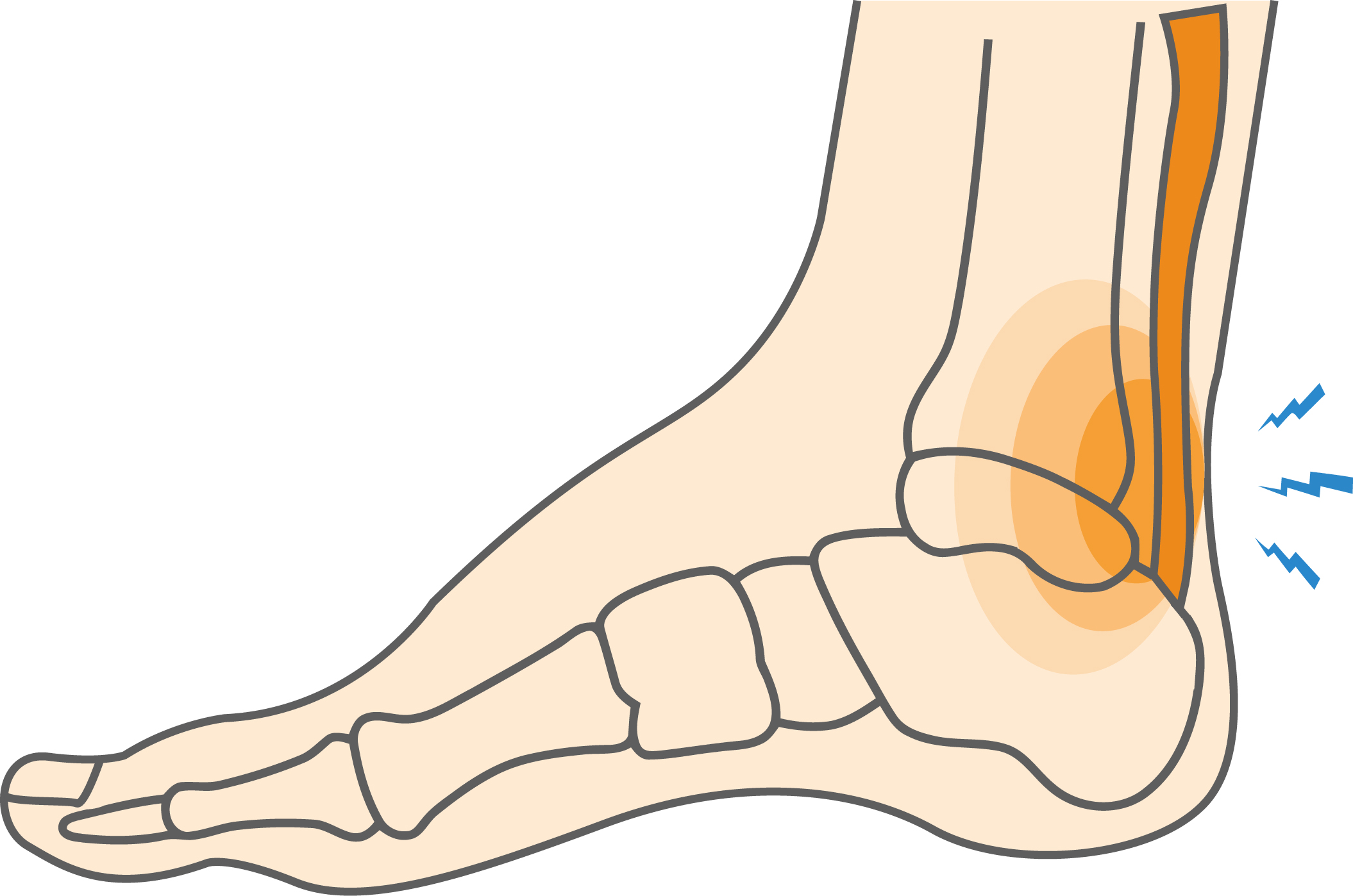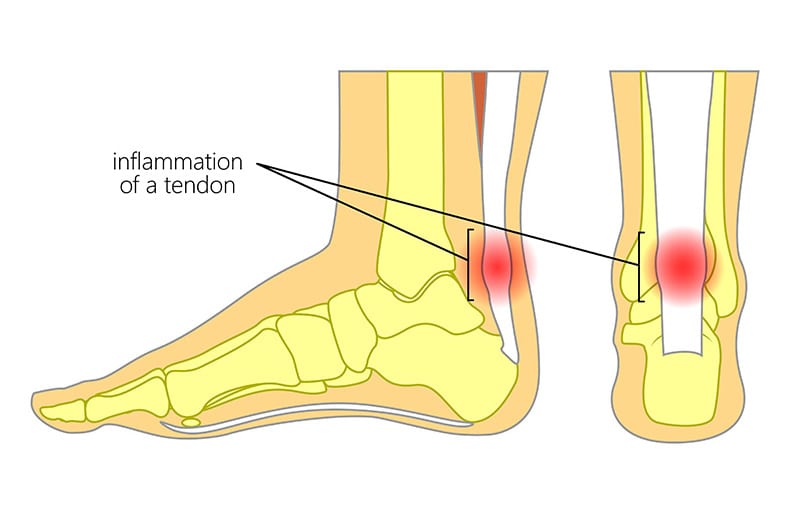The Achilles tendon is the largest tendon in the body and connects the calf muscles to the heel. The tendon is used for push-off strength, balance, and power while standing, walking, running, and jumping. Inflammation of the tendon can occur at the junction between the muscle and tendon, at the tendon itself, or at its attachment to the heel bone. When Achilles pain occurs alongside swelling at the back of the heel, it may signal this common yet painful condition.
Achilles Tendonitits Causes, Symptoms & Treatment Options
Achilles tendonitis is a common condition among athletes. It occurs when the large tendon that runs down the back of your lower leg becomes irritated and inflamed either due to an acute injury or, more commonly, due to overuse.
Overview
Overview

What causes Achilles Tendonitits?
Rather than a single injury, Achilles tendonitis is usually caused by long-term repetitive use of the tendon. Athletes who only exercise sporadically or don’t warm up properly are particularly at risk, especially if they exercise too intensely and without adequate rest to recover in between. Older athletes are at greater risk, as the Achilles tendon degenerates with age. The injury is more common in athletes who play sports involving quick stops and direction changes.
Achilles tendon injuries are most common in these sports:
- Tennis
- Basketball
- Running
- Soccer
- Bicycling
- Hiking
Symptoms
The common symptom associated with Achilles tendonitis is Achilles pain in the back of the leg or ankle, especially in the morning. Pain often worsens with activity. Common symptoms also include:
- Swelling in the back of the leg or ankle
- Tenderness
- Thickening of the tendon
- Stiffness with stretching when “starting up” after sitting or sleeping
- Severe pain the day after exercising
If you experience swelling at the back of the heel alongside these symptoms, it’s crucial to begin rest and recovery as soon as possible.

When to see a doctor
You should see a doctor if you have Achilles pain that doesn’t improve. If the pain is severe and you have trouble walking, you should seek emergency care, as you may have a ruptured tendon. During your visit, your doctor will ask questions about your symptoms and physical activity. A physical examination will be conducted to look for heel cord inflammation and ensure there are no signs of rupture of the tendon, tenderness areas, or the tendon’s thickening. You may be asked to stand on the balls of your toes to test your strength. Your doctor may also order imaging tests, such as an X-ray or magnetic resonance imaging (MRI), to confirm the diagnosis and provide the proper Achilles tendonitis treatment.
Non-operative treatment
Non-surgical treatments are usually effective in resolving symptoms associated with Achilles tendonitis, though they may take a few months. Conservative Achilles pain treatment may include:
- Rest from sports that are painful
- Switching to less strenuous activities that are easier on your Achilles tendon
- Applying ice to the affected area for 20-minute intervals to reduce inflammation; alternating icing with a heating pad may be helpful.
- Nonsteroidal anti-inflammatory drugs (NSAIDs), such as ibuprofen and naproxen, are used to relieve pain
- Night splinting to allow the tendon to heal at the proper length
- Gentle stretching of your calf muscle
- Physical therapy exercises to stretch and strengthen the calf muscles
Try these exercises to help address your condition:
Below is a PDF of the Exercise Program
Surgical Treatment
If Achilles tendonitis doesn’t improve with conservative treatment after several months, your doctor may refer you to an orthopedic surgeon. Surgery may be needed to remove scar tissue, repair the damaged tendon, extend the calf muscle, or address other issues identified by your doctor.
Recovery
Recovery from Achilles tendonitis will vary depending on the extent of damage to the tendon. For some athletes, Achilles pain will resolve in a matter of days with treatment. For others, a much longer recovery time will be required before they can return to play. Physical therapy will be an important part of the rehabilitation process.
GET BACK TO WHAT YOU LOVE. FASTER
Frequently Asked Questions
How long does it take to recover from Achilles tendonitis?
Mild cases may improve within a few weeks, while chronic Achilles tendonitis may take several months of physical therapy and rest. If surgery is needed, which is rare, recovery can take 6 months or more.
What are the first signs of Achilles tendonitis?
Early signs include tightness and Achilles pain after exercise, morning stiffness, and noticeable swelling or tenderness at the back of the heel.
What activities should I avoid with Achilles tendonitis?
Avoid high-impact sports or activities that involve sudden stops or jumps, like basketball or running, until healing occurs. These can worsen heel cord inflammation and delay recovery.
Can I continue exercising if I have Achilles tendonitis?
It depends. Low-impact alternatives such as swimming or cycling (if pain-free) may be allowed, but repetitive activities such as running or jumping must be minimized to prevent worsening Achilles tendonitis.

